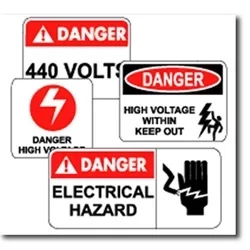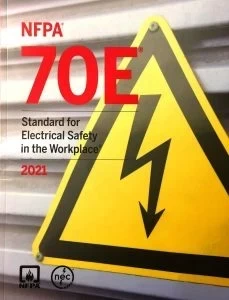Navigating the Complexities of Compliance

The Complexities of Arc Flash Compliance
Introduction to Arc Flash Safety Compliance
Compliance with arc flash safety regulations is a critical concern for organizations operating in environments where electrical hazards are present. These regulations, designed to protect workers from the dangerous effects of arc flash incidents, are continually evolving to incorporate the latest safety research and technological advancements.
As electrical systems evolve and the understanding of arc flash hazards deepens, the regulatory landscape surrounding worker safety continues to shift. Organizations face the ongoing challenge of ensuring their arc flash safety practices align with the latest standards and best practices. This article examines these challenges and how innovation can offer a pathway towards meeting these evolving requirements.
Visit Our Arc Flash Study Course
The Challenge of Staying Current
- Multiple Regulatory Bodies: OSHA standards, NFPA 70E, and potentially industry-specific regulations all govern arc flash safety. Keeping track of requirements across these various sources can be complex.
- Evolving Standards: NFPA 70E undergoes periodic revision. These updates may necessitate changes to hazard analysis methodology, PPE categories, or safety procedures.
- Variances in Interpretation: Regulatory language is sometimes open to interpretation, leading to uncertainty about whether specific practices are fully compliant.
Consequences of Non-Compliance
- Worker Safety Risks: Inadequate safety measures resulting from outdated practices or misunderstandings of regulations directly increase the risk of arc flash injuries or fatalities.
- OSHA Penalties: Non-compliance can carry hefty fines, even if no incidents occur. These fines escalate for repeat offenses or citations for willful negligence.
- Reputational Damage: An arc flash accident caused by falling behind on safety standards can tarnish an organization's reputation, impacting client trust and employee morale.
Challenges in Maintaining Compliance
Evolving Safety Standards
One of the primary challenges in arc flash safety compliance is the dynamic nature of safety standards. Organizations like the National Fire Protection Association (NFPA) and the Occupational Safety and Health Administration (OSHA) frequently update their guidelines to reflect new insights and technologies in arc flash mitigation.
Complexity of Implementation
Translating these complex regulations into practical safety practices can be daunting. Organizations must thoroughly understand the technical aspects of the regulations and how they apply to their specific electrical systems and work processes.
Training and Awareness
Ensuring that all levels of the organization, from management to frontline workers, are adequately trained and aware of the latest safety protocols is another significant challenge. Continuous education and training are essential to maintain a high level of safety awareness and compliance.
Innovations in Safety Practices
Advanced Risk Assessment Tools
Innovations in software and technology have led to the development of advanced risk assessment tools that can accurately model and predict arc flash hazards. These tools help organizations identify potential risks and implement targeted mitigation strategies, facilitating compliance with safety regulations.
Smart Personal Protective Equipment (PPE)
Advancements in PPE, such as smart garments equipped with sensors and IoT connectivity, offer enhanced protection and can monitor the wearers' exposure to hazardous conditions. This technology not only improves safety but also helps in documenting compliance with safety protocols.
Integrated Safety Management Systems
Modern integrated safety management systems can streamline the process of complying with arc flash safety regulations. These systems consolidate risk assessments, training records, incident reports, and compliance documentation in one platform, making it easier to manage and demonstrate compliance.
Overcoming Compliance Challenges
Strategic Planning and Investment
Addressing the challenges of arc flash regulation compliance requires strategic planning and investment in the right tools and technologies. Organizations must prioritize safety and allocate the necessary resources to implement effective arc flash mitigation measures.
Continuous Improvement and Adaptation
Compliance is not a one-time achievement but a continuous process of improvement and adaptation. Organizations need to stay informed about changes in safety regulations and be prepared to adjust their safety practices accordingly.
Collaboration and Expertise
Collaborating with safety experts and consulting with industry organizations can provide valuable insights and guidance in navigating the complexities of arc flash safety compliance. Leveraging external expertise can help in identifying gaps in safety practices and developing effective solutions.
Conclusion
Navigating the complexities of arc flash regulation compliance is a multifaceted challenge that requires a proactive and informed approach. By embracing innovations in safety practices and technologies, organizations can enhance their compliance efforts and create a safer work environment. Continuous improvement, strategic investment, and collaboration are key to successfully managing the evolving landscape of arc flash safety regulations.






